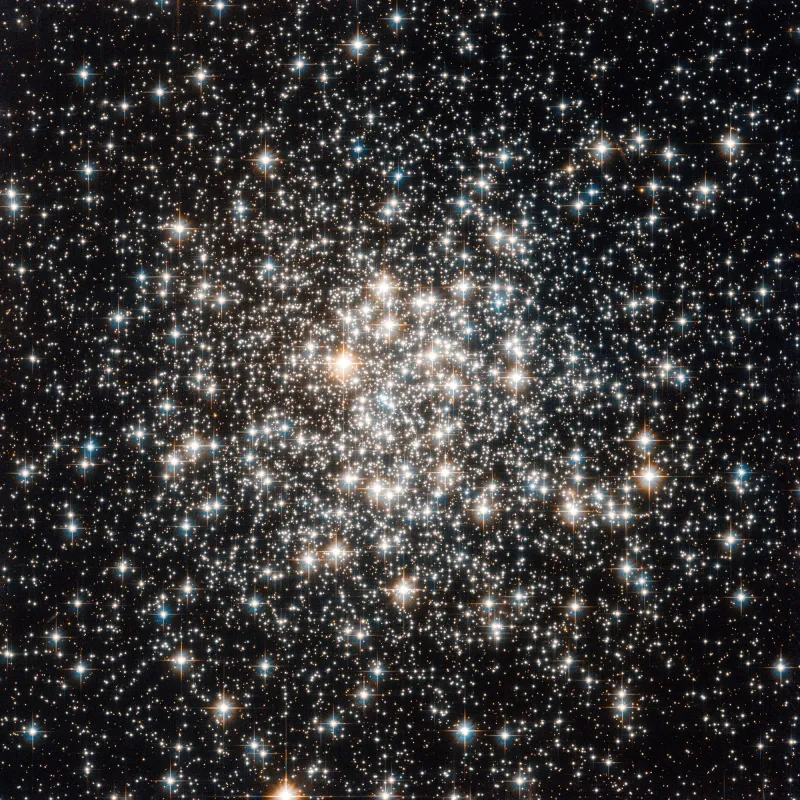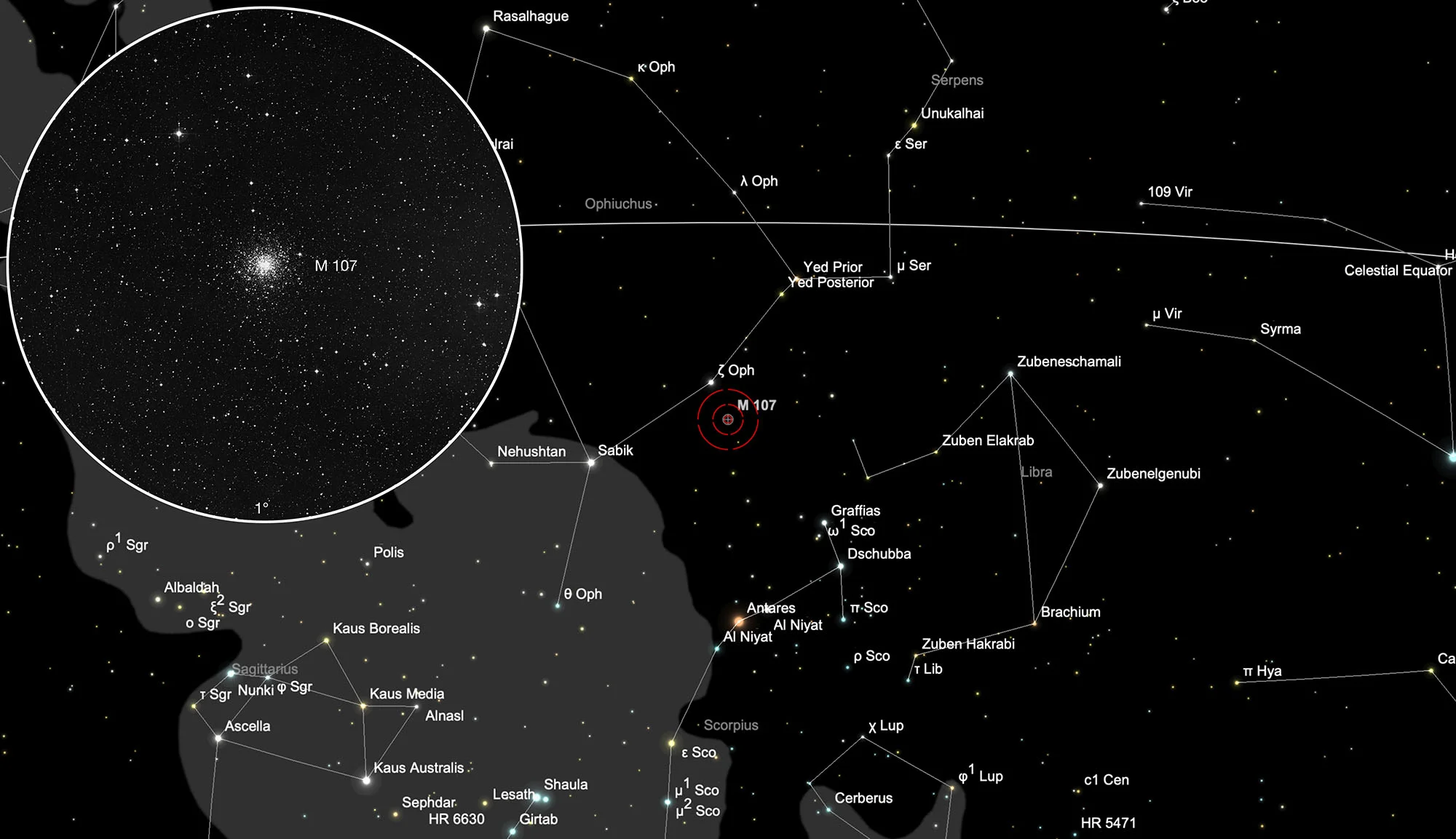Globular Cluster Messier 107

History
The globular cluster M 107 was discovered by Pierre Méchain in April 1782. He mentioned his discovery in his letter of 6 May 1783 to Bernoulli. Unfortunately, his discovery came after Messier submitted his list of for publication in the 1784 Connoissance des Temps. The nebula might have been included in a later publication of Messier's catalog, but there was none. William Herschel discovered this globular cluster independently and was able to resolve it into individual stars in his telescope. Dreyer later included this as NGC 6171 in his «New General Catalogie of Nebulae and Star Clusters» published in 1888. It was not until 1947 that Helen Sawyer identified Hogg NGC 6171 with Méchain's discovery and added it to the Messier catalog as M 107 together with M 105 and M 106. [196, 217]
Physical Properties
M 107 is one of the more than 150 globular clusters that belong to our Milky Way. The centre is not particularly densely packed with stars. It is around 6.4 kpc (20'000 light years) from Earth and contains 182'000 solar masses. [251]
| Designation | NGC 6171 |
| Type | GCL (X) |
| Right Ascension (J2000.0) | 16h 32m 31.9s |
| Declination (J2000.0) | -13° 03' 11" |
| Diameter | 13 arcmin |
| Visual magnitude | 7.8 mag |
| Metric Distance | 6.400 kpc |
| Dreyer Description | globular, L, vRi, vmC, R, rrr |
| Identification, Remarks | WH VI 40; h 3637; GC 4211; M 107; GCL 44 |
Finder Chart
M 107 is located in the constellation Ophiuchus (Serpent Bearer) 2 ° 45 'from ζ Ophiuchi. The best observation time is January to November.
